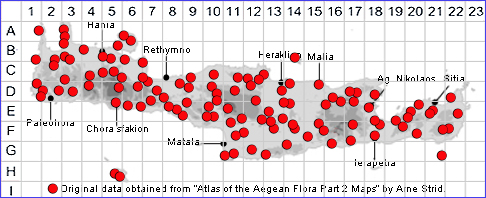SPECIES DESCRIPTION
GAGEA GRAECA
Family and Genus:- See- LILIACEAE/G. BOHEMICA Group
Common Names:- Greek lloydia
Homotypic Synonyms:- Anthericum graecum, Phalangium graecum,
Stellaster graecus, Hemierium graecum, Lloydia graeca, Rhabdocrinum
graecum,
Meaning:- Gagea (L) For the English botanist Sir Thomas Gage (1781-1820).
Graeca (L) Grecian, from Greece,
General description:- Herbaceous plant.
Bulbs:-
1) Solitary, often entanged in the roots and soil particles, coated with dark purple-
red tunics.
2) Main bulbil, (by the outermost basal leaf), appressed but not adnate to the stem.
Stems:-
1) 5-15 cm tall, glabrous, except for the margins of the upper leaves.
Leaves:-
1) Basal, 2 or 3, narrowly linear, flat, 1-2 mm wide.
2) Cauline, short, linear.
Flowers:-
1) Inflorescence, 1-5-flowered, fasciculate, flowers nodding when young.
2) Perianth, infundibuliform, not opening widely;
a) segments, 12-17 mm, narrowly oblong, obtuse, white with purplish-brown
stripes.
3) Style, 1·8-2·5 mm.
4) Anthers, 0·5-1 mm, obtuse.
Fruit:-
1) Capsules, broadly oblong, membranous at maturity.
2) Seeds, compressed.
Key features:-
1) Perianth-segments, white, with purple stripes.
2) Anthers, obtuse.
5) Flowers, usually 3-5.
Habitat:- Rocky limestone slopes, cliff ledges, open coniferous woodland, fallow
terraced fields. 0-700(-1600) m.
Distribution:- S Greece, Crete eastwards, including Cyprus. Widespread and
common on Crete.
Flowering time:- Late Mar to early June.
Photo by:- Steve Lenton

